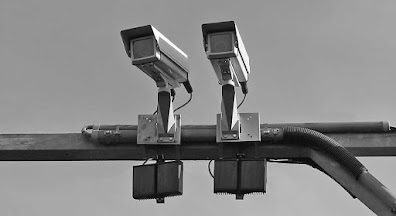Across the U.S., drivers are increasingly noticing cameras at intersections, along highways, and in parking facilities. Many assume these devices are speed or red-light enforcement tools, but in many cases they are license plate reading cameras (LPRs). These specialized systems are designed to scan and record license plates, not necessarily to issue tickets. Understanding where LPR cameras are located and how they function can help drivers separate fact from fear.
Common Locations of License Plate Readers
License plate readers are strategically placed to maximize coverage, efficiency, and usefulness for law enforcement, transportation agencies, and private operators. The most common locations include:
-
Highway Overpasses and Ramps
-
Positioned on overhead gantries or bridges.
-
Used for toll collection, stolen vehicle detection, and traffic analysis.
-
-
Busy Intersections
-
Mounted on poles near traffic lights or traffic signs.
-
Often confused with red-light cameras, but usually used for tracking flow, Amber Alerts, and crime prevention.
-
-
Parking Lots and Garages
-
Found at airports, shopping malls, universities, and private garages.
-
Used to monitor overstays, enforce permits, and simplify automated entry/exit.
-
-
Police Vehicles
-
Mobile LPRs mounted on the roof or trunk of patrol cars.
-
Allow officers to scan plates while driving, instantly flagging wanted or stolen vehicles.
-
-
Residential & Gated Communities
-
Installed at entry gates to monitor traffic in and out of private neighborhoods.
-
Helps property managers enforce access rules and track visitors.
-
-
Border Crossings
-
Widely used at international checkpoints.
-
Helps customs and immigration agencies track vehicles entering or leaving the country.
-
Why These Locations Matter
The placement of license plate reading cameras isn’t random. Each location serves a strategic purpose:
-
Highways & Ramps: Maximizes the number of vehicles scanned, improving tolling and stolen vehicle recovery.
-
Intersections: Provides valuable data for traffic safety and criminal investigations.
-
Parking Facilities: Reduces labor costs while improving enforcement.
-
Police Cruisers: Extends coverage beyond fixed locations.
-
Borders: Enhances national security and monitors cross-border crime.
LPRs vs. Other Cameras
Driver confusion stems from the variety of cameras on roadsides:
-
Traffic Flow Cameras: Positioned high above roads, designed to measure congestion.
-
Red-Light Cameras: Located at intersections, angled to capture vehicles that run red lights.
-
Speed Cameras: Often box-like, placed on poles or trailers to detect speed violations.
-
License Plate Readers: Mounted lower or angled specifically to capture plates, not issue tickets for moving violations.
By knowing which camera is which, drivers can better understand whether a device is monitoring behavior or simply recording movement.
National Expansion of LPR Networks
The presence of license plate readers is rapidly expanding nationwide. Urban centers deploy them for law enforcement, suburban counties add them for traffic monitoring, and private entities invest in them for parking enforcement. The rise of cashless tolling and congestion pricing zones has only accelerated their spread.
For example:
-
New York City uses LPRs in its congestion pricing program.
-
Los Angeles and Chicago integrate them into both traffic flow and law enforcement operations.
-
Smaller communities are increasingly adopting fixed LPR units to supplement limited police manpower.
Privacy Concerns Around Location Tracking
Because LPRs are strategically positioned in high-traffic areas, concerns arise about constant surveillance. Drivers often ask:
-
How long is data stored? Some agencies delete after 30 days, others keep records for years.
-
Who can access the data? Local police, state agencies, and sometimes federal authorities share data across networks.
-
Can private companies misuse it? Parking firms and repossession agencies often run their own LPR systems.
Public debate continues about whether these widespread locations create a “tracking grid” of vehicle movement.
Why We Track LPR Locations in Our Database
At PhotoEnforced.com, we receive thousands of camera location submissions from drivers every year. Many of these are mistakenly flagged as red-light cameras, when in fact they are license plate readers or traffic monitoring cameras.
To reduce confusion, we added a dedicated license plate camera category in our database. This helps drivers distinguish between:
-
Locations where tickets are issued.
-
Locations where plates are scanned for data, security, or tolling.
Knowing the difference not only eases anxiety but also helps educate the public about how roadway surveillance is evolving.
International Examples of LPR Locations
LPR locations aren’t limited to the U.S.:
-
London uses them throughout its congestion charge zone.
-
Singapore has citywide LPR coverage integrated with traffic management.
-
Australia deploys mobile and fixed LPRs for both police and tolling.
Globally, LPR placement is guided by the same principle: maximum coverage at choke points like tolls, borders, and intersections.
The Future of LPR Camera Locations
As technology evolves, the number and variety of LPR locations will continue to grow. Emerging trends include:
-
Integration with Smart Traffic Lights: Automatically adjusting signals based on real-time flow data.
-
Neighborhood Security Networks: Communities pooling resources to install LPRs at every entry/exit.
-
Expanded Highway Networks: Cashless tolling spreading across more U.S. states.
-
Private Sector Growth: Retailers, universities, and even hospitals deploying LPRs for security and parking management.
Conclusion
License plate reading cameras are no longer rare—they are a permanent feature of modern roads and communities. Found on highways, intersections, police cruisers, parking lots, borders, and residential neighborhoods, these cameras serve many purposes beyond issuing tickets. While they improve efficiency, safety, and enforcement, they also raise important debates about privacy and data security.
By clearly identifying and categorizing these cameras, databases like PhotoEnforced.com help drivers understand the difference between enforcement tools and monitoring systems. Knowing where license plate cameras are located allows drivers to make sense of the growing network of roadside technology that shapes today’s driving experience.












